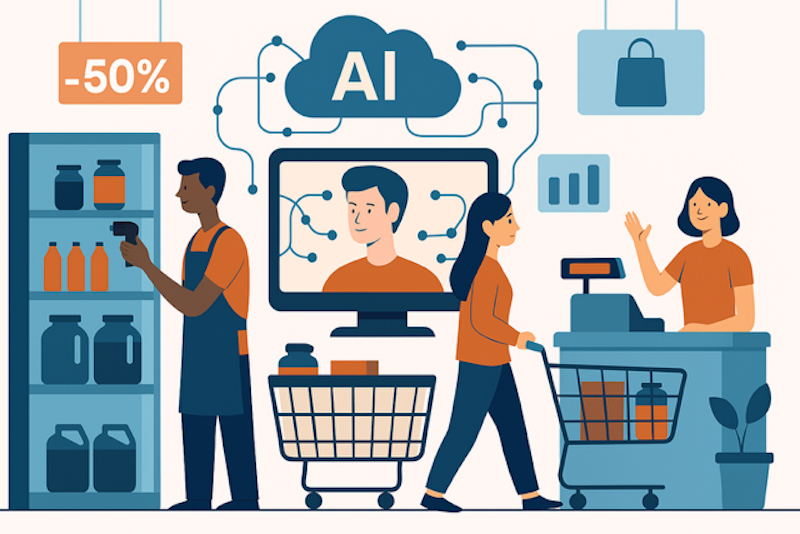Here's how digital engineering solutions are reshaping traditional workflow
The world of engineering is changing. Traditional processes that once relied on isolated teams, paper documentation, and long timelines are giving way to faster, more innovative digital methods.
Digital engineering solutions are leading this shift. These tools and practices are creating more agile, connected, and efficient workflows that help engineers deliver high quality products with less friction.
Instead of waiting for physical models and step-by-step approvals, engineers now use digital platforms to collaborate in real time. Digital transformation is redefining how teams work across the product lifecycle.
In this article, we'll examine how digital engineering reshapes traditional workflows and what this means for the industry's future. Read on!
Seamless Integration of Tools and Teams
Old engineering workflows often operated in silos. Mechanical, electrical, and software engineering teams worked separately, which caused delays and miscommunication. With digital engineering solutions, collaboration has become more fluid. Tools now support shared access to designs, models, and documents. Everyone can contribute to the same project environment without waiting for separate updates.
Systems integration is a big reason for this improvement. Teams can move quickly from concept to delivery when platforms and tools work together without friction. This integration helps reduce manual handoffs and gives engineers more time to focus on solving complex problems.
Cloud computing also plays a vital role in connecting teams. It gives all stakeholders access to the latest versions of designs and specifications. With fewer barriers to information, teams work more efficiently and stay aligned from start to finish.
Achieving this seamless integration often relies on experienced IT support for engineering firms. Engineering firms use a broad mix of digital tools, and a strong IT support team can ensure these tools remain stable, secure, and fully compatible. They can assist with system updates, troubleshoot technical issues, and optimise infrastructure for optimal performance.
Improved Visualisation and Simulation Capabilities
Visualisation has always been a key part of engineering. But with digital solutions, teams now use powerful tools like computer aided design and visual modeling to bring ideas to life faster. These tools allow engineers to see the full system before it's built and explore how parts will interact.
Advanced simulation adds even more depth to this process. Engineers can test how systems perform in various conditions, all in a virtual setting. This reduces the need for physical prototypes and helps teams make wiser decisions earlier in the development cycle.
Model-based systems engineering has helped shift the focus from isolated components to fully integrated systems. Engineers can track behaviour, performance, and interactions across every project layer. These models help reduce risk and speed up delivery without sacrificing quality.
Streamlined Compliance and Documentation
Documentation is critical to engineering, especially when dealing with safety regulations or product standards. In traditional workflows, engineers often had to update every report or track every design version manually. This process was time-consuming and left room for error.
Digital workflows simplify that challenge. Changes made to a model or system are automatically reflected in related documents. Product documentation stays current and consistent, making it easier to meet regulatory requirements without slowing down the project.
This also improves data interoperability. Engineers can move data between tools and platforms without losing context. That makes audits, reviews, and quality checks more straightforward and less disruptive to the workflow.
Real-Time Data and Predictive Insights
One of the biggest advantages of digital engineering is the ability to use real-time data across the development process. Sensors, analytics tools, and cloud-based platforms now give engineers immediate access to how a system is performing or how a change might affect the outcome.
With AI-driven insights, teams can catch design flaws before they become costly mistakes. These tools help identify trends, simulate responses, and fine-tune results based on accurate predictions. Combining artificial intelligence and data engineering supports faster responses and better results.
Digital threads also connect the entire product lifecycle. Information collected during development carries through to testing, production, and even long-term maintenance. This ongoing access to reliable insights allows teams to make data-driven decisions at every stage. It creates a clearer view of how each choice affects future performance, quality, and user satisfaction.
Future-Proofing Through Scalability and Flexibility
Engineering teams need tools that can grow with their needs. Digital engineering platforms offer the flexibility to scale up when needed. Whether a team handles a small system or a large infrastructure project, these tools adjust without major disruptions.
Cloud engineering makes this possible. Teams can store more data, run larger simulations, or support additional users without investing in new hardware. This flexibility helps teams manage costs while staying ready for future demands.
As industries shift and expectations rise, having a workflow that adapts is a clear advantage. Digital transformation strategies help keep operations current and responsive. Whether it's managing mobile networks, supporting wireless infrastructure, or improving human system integration, digital engineering prepares teams for whatever comes next.
Accelerated Product Development and Innovation
Speed is one of the clearest benefits of digital engineering. With digital platforms and software solutions, teams can iterate faster and bring products to market more quickly. Engineers can test ideas, gather feedback, and make improvements without waiting for multiple approval cycles.
Application modernisation supports this kind of rapid product development. Updating legacy tools and systems lets engineers adapt to new technologies and market demands without starting from scratch. Experimenting and exploring new designs is easier when tools respond in real time.
This environment also supports a stronger customer experience. Engineers can respond to customer needs faster, implement improvements quickly, and deliver more reliable products. The feedback loop becomes tighter, which leads to better outcomes and stronger relationships.
Conclusion
Digital engineering is changing how teams design, build, and deliver products. With connected tools, real-time data, and flexible platforms, engineering firms can work faster, reduce errors, and respond quickly to changing demands. As workflows evolve, embracing digital engineering is key to staying competitive and ready for the future.































Continue reading…